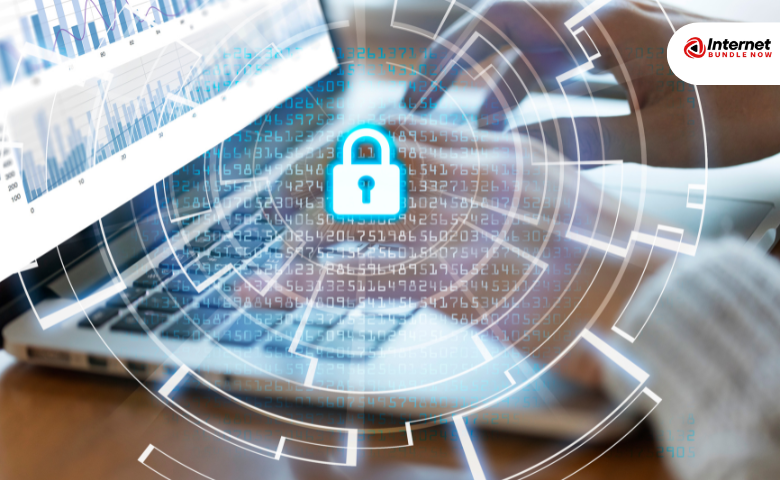- TV
How to Get Premium Channels with Your Cable TV Bundle?
Access to exclusive entertainment content is a priority for many viewers seeking a richer television experience. Premium chan...
Explore More
As we become increasingly connected to the internet, the threat of internet-based malware grows. These malicious programs can compromise your personal data, damage your devices, and even hold your information for ransom. Protecting your devices from these threats has become essential, especially for users of High Speed Internet Plans who may be more susceptible due to higher volumes of online activity. In this guide, we’ll cover the most effective strategies to keep your devices safe and secure, from the basic steps to more advanced protective measures, while ensuring seamless service through reliable Internet Service Providers.
Internet-based malware has evolved significantly over the years. What started as simple viruses has now turned into complex threats, including ransomware, spyware, and Trojans, each capable of taking advantage of your internet connection in different ways. The growth of online services, from banking to shopping and socializing, has created more entry points for malicious actors to exploit. This means that protecting your devices is no longer optional it’s a necessity.
The most common delivery methods for malware are phishing emails, malicious websites, and infected file downloads. Once malware is installed on your device, it can steal your information, damage your files, or even control your system. Fortunately, there are several steps you can take to safeguard your devices against these growing threats.
At its core, internet-based malware refers to any malicious software that spreads through online channels. It includes a wide range of threats, from viruses and ransomware to spyware and adware. These programs often disguise themselves as legitimate software or arrive as attachments in seemingly harmless emails.
Understanding these threats is the first step toward defending against them.
Detecting malware on your device is critical to prevent further damage. Common signs of a malware infection include:
Being aware of these symptoms helps you take quick action to remove the malware before it causes significant damage.
There are several foundational steps that everyone can take to protect their devices from malware.
By ensuring that these basic measures are in place, you significantly reduce your risk of a malware infection.
Malware is often delivered through social engineering techniques like phishing. To add an extra layer of security, using strong, unique passwords for every account is crucial. Strong passwords should include a combination of letters, numbers, and symbols to make them difficult to guess.
Additionally, enable two-factor authentication (2FA) wherever possible. This requires a second form of verification (like a code sent to your phone) in addition to your password, making it significantly harder for hackers to gain access to your accounts.
Both of these steps protect your accounts and data from being accessed, even if a malware infection occurs.
A large portion of malware infections occurs when users click on links in malicious emails or visit compromised websites. To avoid falling victim to these attacks:
By being vigilant about the sites you visit and the emails you open, you can reduce the risk of being infected by malware.
A secure Wi-Fi connection is essential to protect your devices from malware. An unsecured Wi-Fi network makes it easier for hackers to access your data and potentially infect your devices. Here are some key steps for securing your Wi-Fi network:
Ensuring that your Wi-Fi network is properly secured will help prevent unauthorized access and potential malware infiltration.
Even the best malware protection can’t always prevent an attack, so it’s crucial to back up your data regularly. If malware like ransomware attacks your system, a backup can ensure that your important files are not lost.
Consider using cloud-based services or external drives to back up your data. Regular backups make it easier to restore your system if malware causes data loss.
One of the most effective ways to prevent malware infections is to be informed about the risks and recognize potential threats. Learn about common phishing schemes, suspicious links, and unusual pop-ups. Educating your family members, colleagues, or employees about these risks will further reduce the chances of falling victim to a malware attack.
Reliable Internet Customer Service teams often offer educational resources to help you understand common threats and how to avoid them, providing useful tips on keeping your devices secure.
If you suspect your device is infected with malware, take immediate action:
Taking swift action will minimize the damage and help you regain control of your device.
For businesses, protecting devices from internet-based malware requires additional layers of security. Implementing network security tools, using secure servers, and regularly training employees about phishing and safe internet practices are essential. Many Internet Service Providers offer security-focused services for businesses, including High Speed Internet Plans with built-in protections, as well as cloud backup solutions and enterprise-grade encryption.
Mobile devices are often targeted by malware due to their portability and widespread use. To protect your phone or tablet, always:
These precautions can significantly reduce the chances of malware infecting your mobile device.
As technology evolves, so too do the tactics used by cybercriminals. The future of malware could see the rise of more sophisticated threats, including AI-driven malware and zero-day exploits. Internet Service Providers and Internet Customer Service teams are continuously improving security systems, but it’s essential to stay vigilant. Regularly updating software, using strong passwords, and backing up data are practices that will continue to safeguard you against emerging threats.
Protecting your devices from internet-based malware is an ongoing process. With the right precautions in place such as strong passwords, secure networks, and regular backups you can significantly reduce the risk of malware infections. Keeping up with security updates and educating yourself and others will further ensure your protection. By being proactive, you can enjoy a safer and more secure online experience.
Latest insights, tips, and updates from our experts.
George
How to Protect Your Devices from Internet-Based Malware?